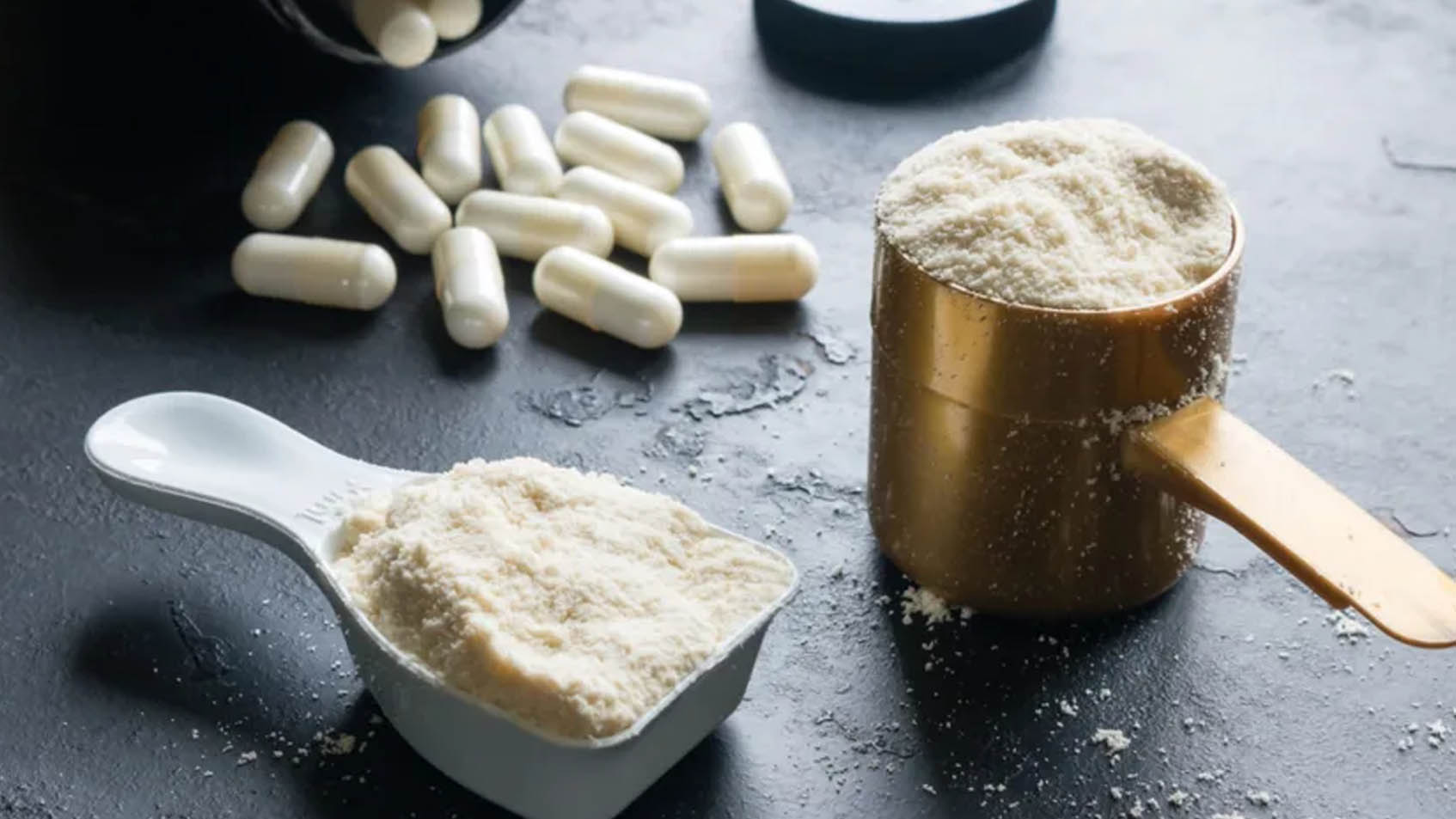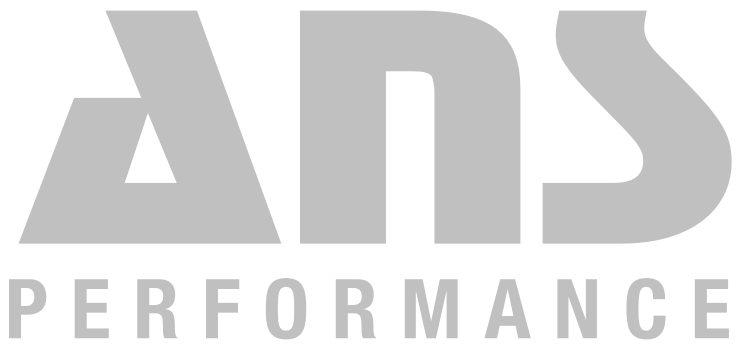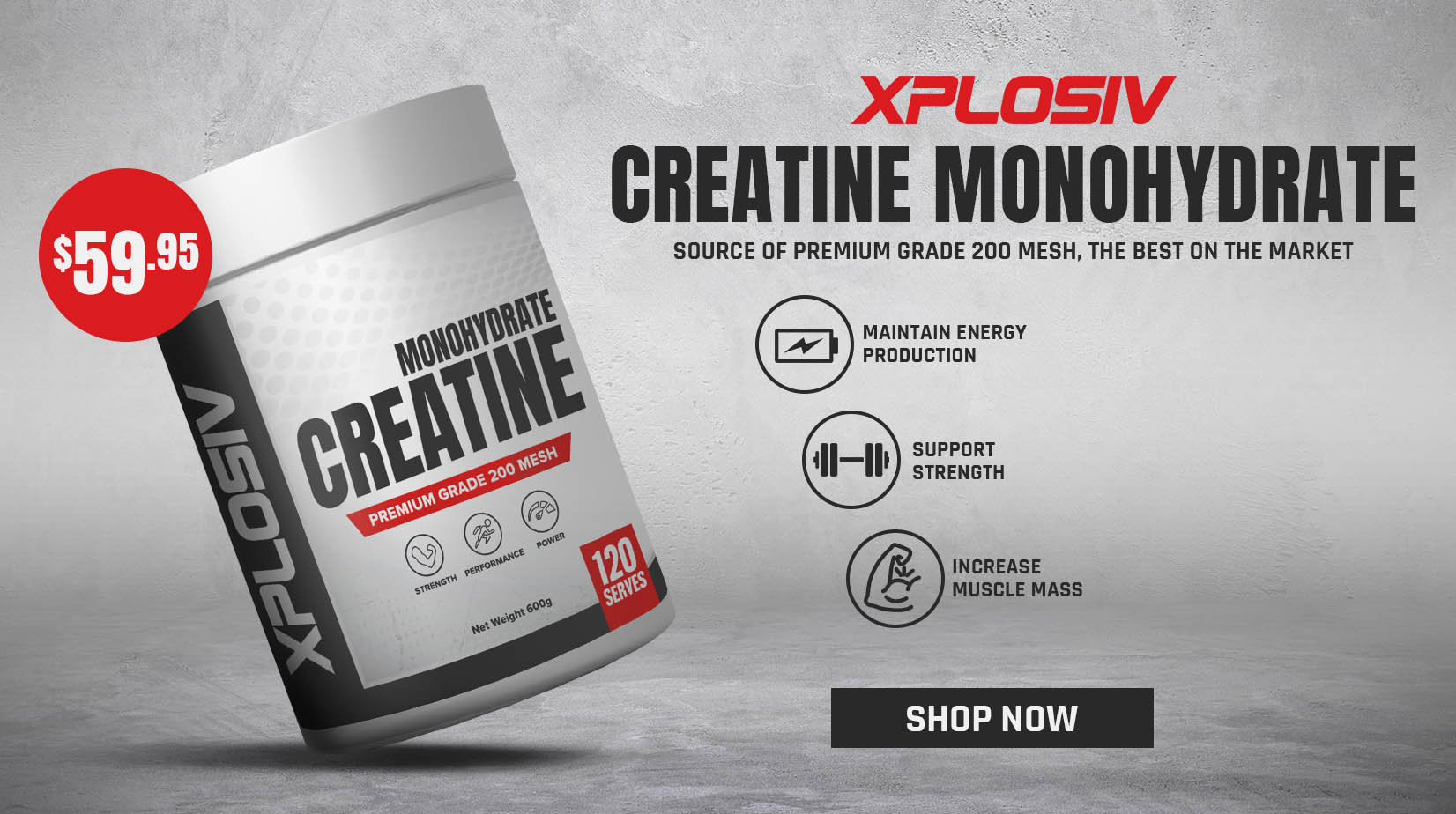
CASARSAGURU/GETTY IMAGES
Creatine Monohydrate vs Creatine Hydrochloride - What’s the difference?
If you’ve been around the supplement world for a while, you’re likely familiar with the top dog status creatine holds for its effectiveness in enhancing muscle building, strength, and athletic performance. It’s safe, well researched, and up there with whey protein for one of the best supplement staples you can add to your routine if you’re serious about the gym. Although creatine monohydrate has the longest history, relative newcomer creatine hydrochloride (HCL) is also gaining traction. This article aims to break down some of the differences between these two popular forms of creatine.
What is creatine?
First up, what is creatine exactly? Creatine is a compound that is found naturally throughout your body, with 95% stored in your muscle cells. About half of the creatine you have comes from the food you eat, particularly red meat and seafood, and the body is also able to synthesize creatine from the amino acids glycine and arginine. During exercise, the primary role of stored creatine is to create energy that your muscle cells can use. Typically, however, our muscle stores of creatine are not maximized by our dietary intake alone, and this is where creatine supplementation can come in.1
How does creatine work?
When you take creatine supplements, your stores of a compound called phosphocreatine are increased. Phosphocreatine plays a key role in the formation of adenosine triphosphate (ATP), which is the form of energy that your body uses for muscular contraction and almost all other cellular processes. During exercise, the body breaks down ATP, and your ability to continue to perform at maximal intensity is limited by the rate at which ATP can be resynthesized. The higher your stores of phosphocreatine, the faster you can continue to make ATP, and therefore the longer your muscles can maintain their work rate. This ability to make ATP faster and sustain maximal intensity for longer is the primary mechanism behind the increased performance attributed to creatine supplementation. It also promotes increased muscle building and muscular strength because you have a greater capacity for overload during strength training.2,3
In addition to this primary mechanism, there are a few other ways that creatine has been shown to contribute to muscle gain. These include:
- Raising levels of insulin-like growth factor-1 (IGF-1), an anabolic hormone that increases muscle growth4,5
- Increasing water in muscle cells which gives them a larger appearance6,7
- Reducing muscle breakdown which shifts the balance towards muscle gain
Creatine monohydrate vs creatine HCL
Creatine monohydrate comprises one creatine molecule with one water molecule. It is the form of creatine that has the longest history and has been most extensively studied, and the majority of research regarding the efficacy and safety of creatine supplementation has been conducted with the monohydrate form.1,8 Creatine monohydrate may also be processed as micronized creatine, which aids in its solubility, and an anhydrous version has the water molecule removed for 100% creatine purity.
Creatine HCL has an attached hydrochloride molecule rather than a water molecule. The addition of hydrochloride means that the creatine is more soluble and may be more readily absorbed by the body. It also means that there is greater stability of the creatine, and these factors are responsible for some of the proposed benefits of the hydrochloride over monohydrate form.
Effectiveness, dosage, and side effects
Creatine monohydrate has been around for a long time, and there is a large body of research supporting its effectiveness. We know that it has measurable benefits for enhancing muscular size, muscular strength, and athletic performance capacity, and we can also be reasonably sure of its safety in healthy populations.1,8
Supplementation with creatine monohydrate usually necessitates a loading phase, where a larger daily dose is taken for a period of 5-7 days in order to saturate muscle stores, before a slightly smaller daily dose is taken consistently to maintain that saturation. During the loading phase, 20g per day is typical, broken into four 5g doses over the course of the day. Maintenance requires around 5g of creatine monohydrate per day taken in a single dose. It is possible to skip the loading phase, however it could take as long as 3-4 weeks for muscles to reach the same level of creatine saturation.1,8,9 Because of the way that creatine draws water into the muscle cells, it is crucial to maintain adequate hydration while taking creatine.
Despite its lack of serious long term side effects, some people report feeling discomfort related to supplementation with creatine monohydrate. The most typical concerns are increased water retention and bloating, and some people also experience associated cramping. While not likely to cause serious harm, these effects can be unpleasant, and there is suggestion that these symptoms are lessened or avoided with creatine HCL.
Creatine HCL is newer than creatine monohydrate, and in theory it comes with the same benefits for muscular size, strength, and performance. However, because it has been around for a lesser period, there are fewer studies available which have addressed these questions in samples taking creatine HCL specifically. Although we can’t be certain without further research, it is likely that many of the benefits are maintained, and its other features make it an appealing choice for some creatine users.
In particular, creatine HCL is far more soluble than creatine monohydrate10, which makes it more readily absorbable by the body. The increased rate of absorption can also reduce the less pleasant side effects that have been anecdotally associated with monohydrate, including a reduction in the experience of water retention, bloating and cramping. It also accounts for a significantly reduced daily dosage relative to monohydrate. The greater stability of the creatine that results from the attached hydrochloride may further eliminate the need for any loading phase.
The bottom line
Creatine is a safe, effective, and well researched supplement for enhancing muscular growth and performance. Two of the most common forms of creatine supplementation are creatine monohydrate and creatine hydrochloride (HCL). Most research has been conducted in creatine monohydrate; however, some monohydrate users report side effects such as bloating which can be unpleasant. Creatine hydrochloride on the other hand is reported to have greater solubility and a faster rate of absorption, which can eliminate associated symptoms and means a smaller daily dose is required. If you don’t suffer from side effects related to creatine monohydrate, you don’t mind the loading phase and higher daily dose, and want the form of the supplement that costs the least and has the greatest research backing regarding effectiveness, then monohydrate may be the best pick for you. However, if you find the potential bloating and cramping uncomfortable, want to be able to skip any loading phase and go straight to a small, easy daily dose, and want the form of the supplement that has the greatest solubility and absorption, then creatine HCL may be your preference. Either way, consistent inclusion of creatine in your supplementation routine with consistent progressive overload training will reap the benefits.
References
- Kreider, R. B., Kalman, D. S., Antonio, J., Ziegenfuss, T. N., Wildman, R., Collins, R., Candow, D. G., Kleiner, S. M., Almada, A. L., & Lopez, H. L. (2017). International Society of Sports Nutrition position stand: safety and efficacy of creatine supplementation in exercise, sport, and medicine. Journal of the International Society of Sports Nutrition, 14, 18. https://doi.org/10.1186/s12970-017-0173-z
- Persky, A. M., & Brazeau, G. A. (2001). Clinical pharmacology of the dietary supplement creatine monohydrate. Pharmacological Reviews, 53(2), 161–176.
- Bird S. P. (2003). Creatine supplementation and exercise performance: a brief review. Journal of Sports Science & Medicine, 2(4), 123–132.
- Deldicque, L., Louis, M., Theisen, D., Nielens, H., Dehoux, M., Thissen, J. P., Rennie, M. J., & Francaux, M. (2005). Increased IGF mRNA in human skeletal muscle after creatine supplementation. Medicine and Science in Sports and Exercise, 37(5), 731–736. https://doi.org/10.1249/01.mss.0000162690.39830.27
- Burke, D. G., Candow, D. G., Chilibeck, P. D., MacNeil, L. G., Roy, B. D., Tarnopolsky, M. A., & Ziegenfuss, T. (2008). Effect of creatine supplementation and resistance-exercise training on muscle insulin-like growth factor in young adults. International Journal of Sport Nutrition and Exercise Metabolism, 18(4), 389–398. https://doi.org/10.1123/ijsnem.18.4.389
- Schoenfeld B. J. (2010). The mechanisms of muscle hypertrophy and their application to resistance training. Journal of Strength and Conditioning Research, 24(10), 2857–2872. https://doi.org/10.1519/JSC.0b013e3181e840f3
- Wu S-H, Chen K-L, Hsu C, Chen H-C, Chen J-Y, Yu S-Y, Shiu Y-J. Creatine Supplementation for Muscle Growth: A Scoping Review of Randomized Clinical Trials from 2012 to 2021. Nutrients. 2022; 14(6):1255. https://doi.org/10.3390/nu14061255
- Buford, T. W., Kreider, R. B., Stout, J. R., Greenwood, M., Campbell, B., Spano, M., Ziegenfuss, T., Lopez, H., Landis, J., & Antonio, J. (2007). International Society of Sports Nutrition position stand: creatine supplementation and exercise. Journal of the International Society of Sports Nutrition, 4, 6. https://doi.org/10.1186/1550-2783-4-6
- Hultman, E., Söderlund, K., Timmons, J. A., Cederblad, G., & Greenhaff, P. L. (1996). Muscle creatine loading in men. Journal of applied physiology, 81(1), 232–237. https://doi.org/10.1152/jappl.1996.81.1.232
- Gufford, B. T., Sriraghavan, K., Miller, N. J., Miller, D. W., Gu, X., Vennerstrom, J. L., & Robinson, D. H. (2010). Physicochemical characterization of creatine N-methylguanidinium salts. Journal of Dietary Supplements, 7(3), 240–252. https://doi.org/10.3109/19390211.2010.491507



















